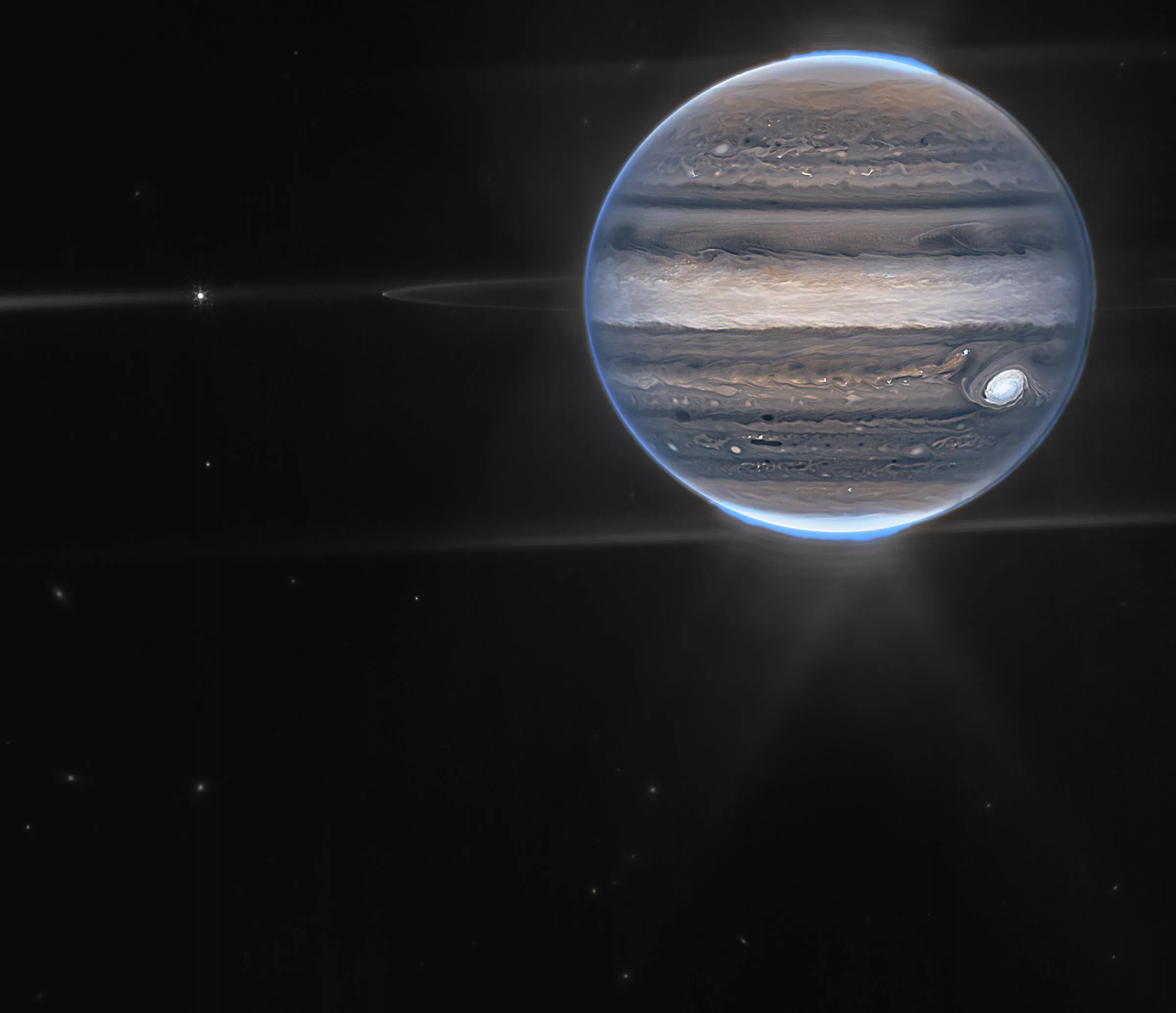...Continued from last post.
Btw, the reason I'm posting this stuff on this thread is because people were interested in polar alignment concepts, and how polar alignment error affects the telescope's drift. I'm hoping this stuff is on-topic.
Example 2: Altitude error. Altitude error is most pronounced for stars near the celestial equator and the horizons.
Here's an approximation example where a star is on the celestial equator, but kind-of-sort-of near the East or West horizon.
Due to the atmosphere though, we can't choose a star too close to the horizon, or atmospheric refraction would interfere with our measurements. So you'll need to choose a star near the celestial equator with an altitude at least around 20 deg above the horizon -- but not too far above the horizon, no more than maybe 45 deg if obstructions allow.
Once you choose a star, measure it's angle along the celestial equator, starting at the intersection of the equator and horizon. Call this angle, measured in degrees, \phi_{ra}.
You can use your outstretched hand to measure \phi_{ra}.
Figure 9. Measuring angles with your outstretched hand.
(Image source:
https://www.abc.net.au/science/articles/2009/07/27/3169109.htm)
Anyway, Fig. 10 shows how Altitude (Alt) error affects drift.
Figure 10. Example star near the horizon (East here) on the celestial equator, moving from lower left to upper right.
Variable definitions for Fig. 10:
- t: Time in units of minutes.
- R: Rate of drift across the sky for a star on the celestial equator. Approximately \frac{\pi}{720} rad/min.
- \theta_{alt}: Altitude error, in units of radians (i.e., what we're trying to minimize).
- \phi_{ra}: Absolute value of the angular distance starting from the intersection of the celestial equator and horizon, ending at the star of interest, measured at the time the drift measurements begin. Units are degrees.
- \theta_{ra}: Same as \phi_{ra} except converted to radians.
- d: magnitude of star's declination drift, in units of radians.
Once again, as seen in the figure, the drift will occur almost exclusively along the declination axis. The declination drift can be calculated as:
d = \theta_{alt} \left[\sin(\theta_{ra} + Rt) - \sin(\theta_{ra}) \right]
We can correct the error by making an adjustment of \theta_{alt} on the mount's altitude knobs, which would have a corresponding change of
a_{alt} = \theta_{alt} \sin(\theta_{ra} + Rt)
on the position of the star, as seen from the eyepiece or sensor. This adjustment is shown in Fig 11.
Figure 11: Altitude adjustment. (Star in the East shown here.)
(The equations are same for a star in the West, except that the Rt term gets a negative sign.)
After some algebra and some small angle approximations we find
\frac{a_{alt}}{d} = \frac{\sin(\theta_{ra} + Rt)}{\sin(\theta_{ra} + Rt) - \sin(\theta_{ra})}<br />
= \frac{\sin(\theta_{ra}) \cos(Rt) + \cos(\theta_{ra}) \sin(Rt)}{\sin(\theta_{ra}) \cos(Rt) + \cos(\theta_{ra}) \sin(Rt) - \sin(\theta_{ra})} \approx \frac{229 \tan(\phi_{ra})}{t} + 1
for small t (less than around a half hour or so).
For a star in the West, the approximation is the same except for a negative sign.
\frac{a_{alt}}{d} \approx \frac{229 \tan(\phi_{ra})}{t} - 1.
In order to save some effort in the field, you could decide to patch of sky where you will choose your star ahead of time. That way you can calculate the C_{alt} = 229 \tan \phi_{alt} ahead of time. Then in the field, you'll need to calculate
a_{alt} \approx \left( \frac{C_{alt}}{t} + 1 \right)d, if the star is in the East, or
a_{alt} \approx \left( \frac{C_{alt}}{t} - 1 \right)d, if the star is in the West.
Unlike the azimuth adjustment, in the case of altitude error and adjustment, both the drift and the apparent movement of the star during adjustment occur on the Dec axis. Note however, the adjustment is accomplished with the
altitude knobs on the mount,
not the declination controls.
In the case of a star in the East, the adjustment should be made such that the star's apparent motion in the eyepiece or sensor is in the
opposite direction as the drift. See Fig. 12.
Figure 12. Altitude adjustment as would be seen through the eyepiece or sensor for a star in the East. Note: adjustment might extend beyond the field of view of the eyepiece/sensor.
For a star in the West, the adjustment should be made in the
same direction as the drift (Fig. 13).
Figure 13. Altitude adjustment as would be seen through the eyepiece or sensor for a star in the West. Note: adjustment might extend beyond the field of view of the eyepiece/sensor.
More thoughts on polar alignment:
If you have the capability to hook up your scope to a digital camera and computer, don't do polar alignment as discussed here. Use plate solving instead (such as what can be done with NINA or SharpCap). I haven't performed polar alignment like what's discussed here for years. Plate solving is the way to go. Once the software is installed and configured, it only takes a few minutes to do polar alignment with plate solving. It's a game changer.
---------------------
@Andy Resnick, you mentioned you were having problems with drift along the RA axis. I can all but guarantee that the culprit is something other than polar alignment error. Unless you're trying to track a star
really close to the pole, like Polaris, polar alignment error shows up almost exclusively as Dec drift.
So if you're experiencing RA drift, I'd look elsewhere, like the periodic error of your mount's tracking motors, flexure, balance, or something I haven't though of.






